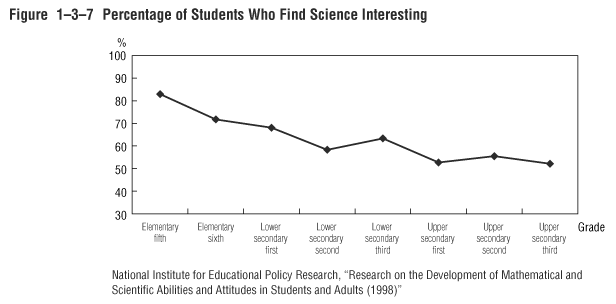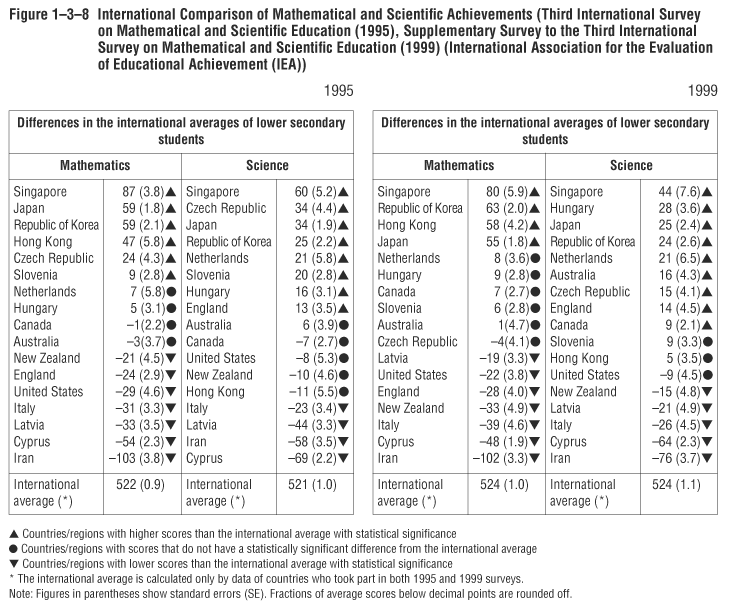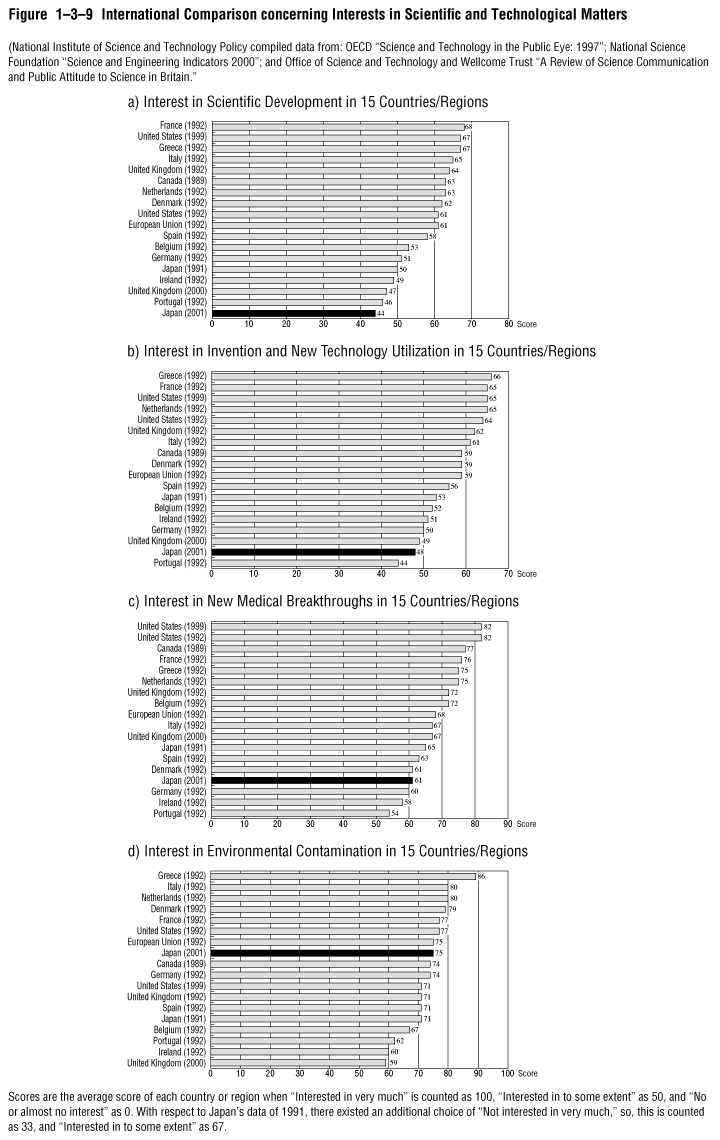| Home > Policy > White Paper, Notice, Announcement > White Paper > Japanese Government Policies in Education, Culture, Sports, Science and Technology 2001 >Chapter3 Section4.1 | ||
In order for Japan to continue to be vibrant, affluent, secure and safe in the 21st century, it is indispensable to further promote science and technology and realize a "nation based on creativity of science and technology," which will lead the world in the creation of advanced knowledge and technological innovations. Intellectual creativity is one of the most precious resources of Japan. For a nation as such, it is an extremely important agenda to cultivate public interest, especially among younger generations, in science and technology and to build a wide range of human resources for future science and technology.
At present, however, among Japanese youths in particular, there seems to be a tendency away from science and technology. For instance, the follow-up survey conducted by the National Institute for Educational Policy Research shows that fewer and fewer students find science interesting as they proceed through educational stages. Specifically, more than 80% of fifth grade elementary students feel, "science is interesting," but only slightly more than 60% of second year lower secondary students and 50% of upper secondary students think the same way ( Figure 1-3-7 : Percentage of Students Who Find Science Interesting.) According to the third international survey on mathematics and science education that was conducted by the International Association for the Evaluation of Educational Achievement (IEA) in 1995 and its supplementary survey in 1999, the achievements of Japanese second year upper secondary students are ranked in the top group with students of the Republic of Singapore and the Republic of Korea, and the percentage of correct answers to the same questions has not dropped when compared to the past ( Figure 1-3-8 : International Comparison of Mathematical and Scientific Achievements.) Nevertheless, the percentage of students who "like" or "enjoy" science is at the lowest level internationally, and the fewest students, much less than the international average, "regard science as an important part of their life," or "wish to be involved with scientific jobs in future." The research results by the National Institute for Science and Technology Policy also indicate a similar tendency. According to this survey, Japanese people's interests in scientific development, invention and new technology utilization and medical breakthrough are extremely low compared to those of other countries ( Figure 1-3-9 .)



Given such a situation, efforts should be made to heighten students' motivation to learn, intellectual curiosity and spirit of inquiry at elementary and secondary schools. Specific measures that should be taken include: (1) putting more emphasis on experiential, problem-solving learning through observations, experiments and project studies; (2) enhancing facilities necessary for this type of learning; (3) providing students with opportunities to get familiar with science and technology in coordination with universities, research institutes, local museums, etc.; and (4) presenting images of science or engineering professionals who are active in society. In addition, it is important to deploy comprehensive policies to improve science and technology literacy of the entire society.
| Back To Top | MEXT HOME |